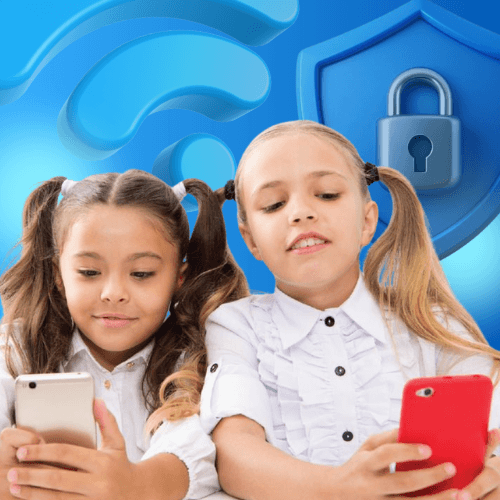By: Ubiratã Barros

The internet opens a world of knowledge, creativity, and connection for children—but it also exposes them to serious risks. From cyberbullying to predators and inappropriate content, it’s vital for parents to stay involved and take proactive steps. This guide explores how to protect your children online while encouraging safe, responsible digital habits.
Understand the Risks Children Face Online
Children and teens can encounter many dangers when using the internet unsupervised:
- Inappropriate content (violence, sexual material, hate speech)
- Cyberbullying by peers or strangers
- Online predators posing as friends
- Scams or phishing attempts targeting kids
- Excessive screen time affecting mental health and sleep
Being aware of these risks helps you take meaningful action to minimize them.
Set Clear Rules for Internet Use
Establishing boundaries creates a sense of safety and structure.
- Set time limits for online activity.
- Create a list of approved websites and apps.
- Require devices to be used in shared family spaces, not bedrooms.
- Decide what’s off-limits (e.g., video chats with strangers, in-app purchases).
Use Parental Control Tools
Technology can support your efforts to keep your child safe.
- Use parental control software like Qustodio, Norton Family, or built-in tools in iOS and Android.
- Enable Google SafeSearch and YouTube Restricted Mode.
- Set up child profiles on streaming services and gaming platforms.
- Review browser history and app usage regularly.
Teach Your Kids About Online Privacy
Children may not understand what information is too personal to share.
- Explain why they should never share:
- Full name
- Home address or school name
- Phone number
- Photos in school uniforms
- Encourage them to use nicknames or avatars online.
Monitor Social Media Use
If your child is old enough for social media, supervision is crucial.
- Set up accounts together and learn the platforms.
- Follow or friend them so you can monitor posts.
- Talk about what’s appropriate to share and what isn’t.
- Review privacy settings regularly and block unknown messages.
Encourage Open Communication
Make your child feel safe coming to you if something online makes them uncomfortable.
- Avoid judgment or punishment when they report something.
- Reassure them they won’t get in trouble for asking questions.
- Encourage them to “pause and tell” if they receive strange messages or see upsetting content.
Educate Them on Cyberbullying
Children need to understand what cyberbullying looks like and how to respond.
- Explain that bullying online is just as serious as in person.
- Encourage them to speak up if they or a friend is being targeted.
- Teach them to block bullies, take screenshots, and report harmful content.
Protect Devices and Accounts
Children’s devices can become targets for hackers too.
- Use antivirus software and keep all apps updated.
- Set strong passwords and enable two-factor authentication where possible.
- Avoid downloading free games or apps from unofficial sources.
Watch for Behavioral Changes
If something is wrong, your child may not tell you—but their behavior might change.
- Signs of trouble:
- Withdrawal or secrecy
- Mood swings
- Changes in sleep or appetite
- Avoiding the internet or obsessively using it
Stay alert and gently investigate if you notice these signs.
Empowered, Not Scared: Teaching Smart Online Habits
The goal isn’t to scare children off the internet—it’s to help them develop safe, responsible habits. By staying involved, setting boundaries, and fostering honest communication, you give your child the tools to explore the digital world with confidence and care.

It is essential that parents closely monitor their children’s internet use, especially on social media, where they are exposed to risks such as inappropriate content, cyberbullying and contact with strangers. Supervising online activities, setting limits and maintaining an open dialogue are essential attitudes to ensure safe and healthy browsing, protecting children’s emotional well-being and development.

